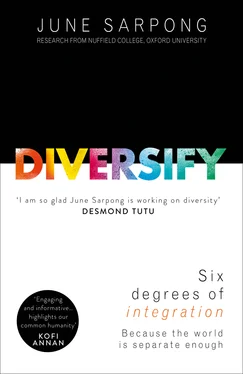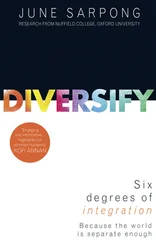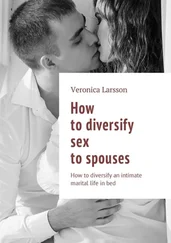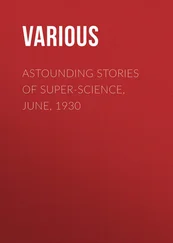As I opened my mouth to introduce myself, Agyness took over and I froze. I couldn’t speak, my palms began to sweat, and I was overcome with insecurity and self-doubt. Agyness was on a roll, bombarding me with numerous reasons as to why I shouldn’t ask him to speak at our next event. An hour passed, he even smiled a few times, but I averted my eyes and looked to the floor. Eventually he and his team left.
I was furious with myself for not having seized the opportunity that was right in front of me. I got up to leave and bumped into an old work colleague in the seminar foyer. As my colleague and I chatted, Jochen and his team walked past and stopped yards away from where we were standing. They say there are no second chances in life, but here I was, being given one just moments after I had blown the first. This was my opportunity to take the reins from Agyness and redeem myself to myself. But, unfortunately, Agyness overpowered me and I froze again as Jochen and his team left the building.
That was a pivotal moment for me, a moment when I let fear win the day. What was different this time, compared to when I was walking onto that stage? Why did I make a choice to play it safe rather than risk rejection? On another occasion, there could have been an entirely different outcome – there have been plenty of times in my life when opportunities have presented themselves and I’ve jumped at them, because in that particular moment I was feeling confident and sure of my abilities.
I’ve nicknamed this moment a ‘Jochen Moment’ – basically the opposite of a light-bulb moment. Fortunately, ‘Jochen Moments’ do not occur as much as they used to, but when they do, Agyness is usually lurking somewhere not too far away.
I’m pleased to say this story has a happy ending: a few years later I did manage to summon up the courage to ask and, yes, Jochen did end up speaking at one of my events. In this case opportunity actually knocked thrice, but obviously this is by no means the norm. I got lucky.
I encourage you to muster up the courage to seize all good opportunities when they arise. Courage requires risking failure and rejection, but it’s a muscle that needs to be regularly exercised in order to develop core strength.
The Agyness Challenge
My cousin Reg has an interesting theory about women and fearing rejection – he believes that part of the reason men are better at dealing with rejection is because of the practice they get in the dating arena. According to Reg, from the time boys hit puberty and start asking girls out, ‘no’ is a word they become well acquainted with. Therefore they take ‘no’ less personally, and see it as a numbers game. As far as Reg is concerned, for every ten women he asks out at least one is bound to say yes – two if he’s lucky. Those aren’t bad odds.
And he might actually have a point. The research suggests that in the workplace men are better at dealing with rejection than women, and certainly don’t judge themselves as harshly. Sharon Vosmek, founder and CEO of Astia (a US not-for-profit organization that supports women-led businesses), cites a study by Professor Shelley Correll at the Clayman Institute for Gender Research at Stanford University, which monitored the reactions of ‘C’ grade calculus students. This is what Vosmek discovered:
The men were perceiving they had passed and were wizards, and would potentially use it to go on and negotiate a higher salary. Women in the same calculus class – the majority would drop the course, perceiving they had failed and never mention it again. So what happens when women are rejected? They are already rejecting themselves . *
My ‘Jochen Moment’, it turns out, was a classic female response, hardwired from centuries of gender conditioning. It forced me to face my insecurities and stop avoiding the fact that they existed, something I had been doing my whole adult life. And using Reg’s theory as my guide for healing, I decided to develop my own ‘Agyness Challenge’ based on Jason Comely’s ‘Rejection Therapy’; I suppose this is a sort of Degree for the Others. Comely, a Canadian entrepreneur, devised a social self-help ‘game’ for overcoming a fear of rejection, whereby to ‘win’ required you to receive at least one rejection each day for a period of time, with the intention of training yourself to overcome the fear through extended exposure.
Do this today: the five objectives of Rejection Therapy
1. Be more aware of how irrational social fears control and restrict our lives.
2. Smash the tyranny of fear and reap the treasures (treasures include wealth, relationships, and self-confidence).
3. Learn from, and even enjoy rejection.
4. Do not be attached to outcomes, especially when it involves the free agency of other people.
5. Permit yourself to fail.
My challenge involves me journaling which of my career choices have been led by Agyness, and which by my confident self. I also do simple things, like seeking advice or mentorship from people I admire – this can be by cold email, or by approaching them at events and seminars.
I force myself to do this much more than I am naturally comfortable with. Even though I work in television and on the surface seem to be very much an extrovert, I am actually quite shy, so this is a real effort for me. However, the benefits far outweigh the safety of staying in my comfort zone.
One example of this is a friendship I now have with Simon Collins, former Dean of the Parsons’ School of Fashion in New York. I wanted Simon’s help with Ldny.com, a fashion social enterprise I was launching. I emailed him more than five times and he ignored me on each occasion. Something similar happened with Ed Burstell, then CEO of Liberty.
Usually, I would have let Agyness’s fear of rejection win, but this time my challenge meant I couldn’t. So even though it wasn’t exactly a boost to my ego, I refused to give up, and persisted until both of them responded. I can now confidently say they are both glad they did. We’ve gone on to work on some great projects together as well as to form great friendships, all of which we would have missed out on had I not persisted – which causes me to ask myself: what have I lost on those occasions when Agyness has prevailed?
So, I urge women and other ‘others’ everywhere to challenge their own Agyness. We have to learn not to take rejection personally, and rather view it as part of the pathway to success. Once women allow themselves to fear that they are not pretty enough, not clever enough, not strong enough, they behave in a way that limits themselves and makes their dreams less likely to come to fruition. I don’t know if it’s ever possible to rid ourselves 100 per cent of our Agyness – a lifetime of conditioning cannot be erased overnight. However, facing rejection head-on means you become desensitized to it and better equipped to rise above it, which will help level the playing field not just for ourselves but for future generations.
Having it all
The payoff, for ourselves and for society, when we push beyond our worthiness barriers is priceless. Through my work, I’ve been fortunate enough to come up close and personal with some of the most inspirational women of our time – women who fearlessly embody the Sheryl Sandberg philosophy of ‘leaning in’; women who defy (present-day) expectations and limitations.
These women are creating a new normal – one that is centred around female-friendly working practices – and it’s being led by women like Mary Callahan Erdoes. As chief executive officer of J.P. Morgan Asset Management, Callahan Erdoes is one of the most important people in finance and supervises over $2.2 trillion in assets. A wife and mother to three children, she explained to me how she used her seniority to make it easier for other working mothers within her organization. She leaves the office early enough to collect her children from school every day, and loudly announces it daily to her team: ‘I’m leaving to go and pick up the kids.’
Читать дальше












